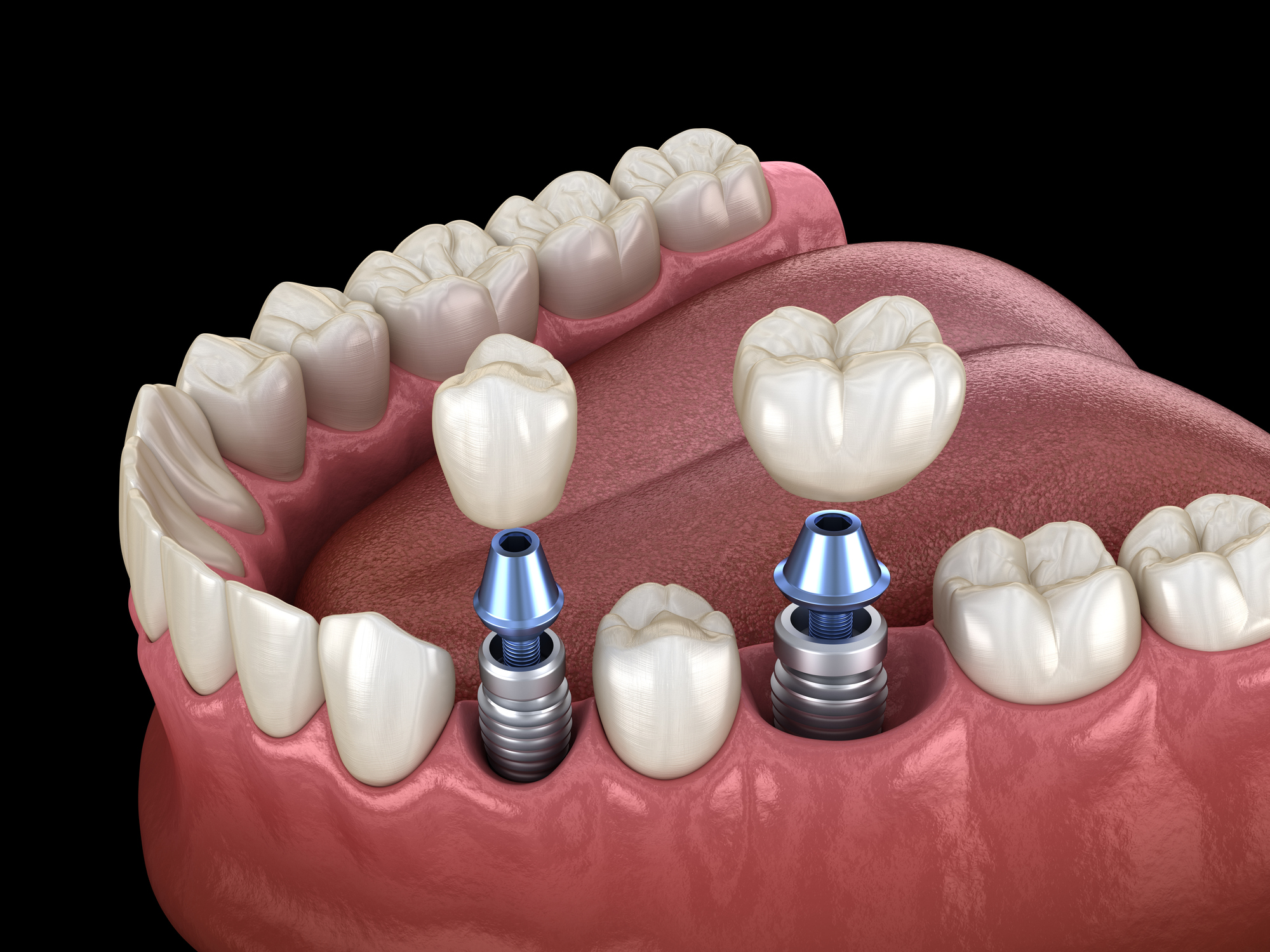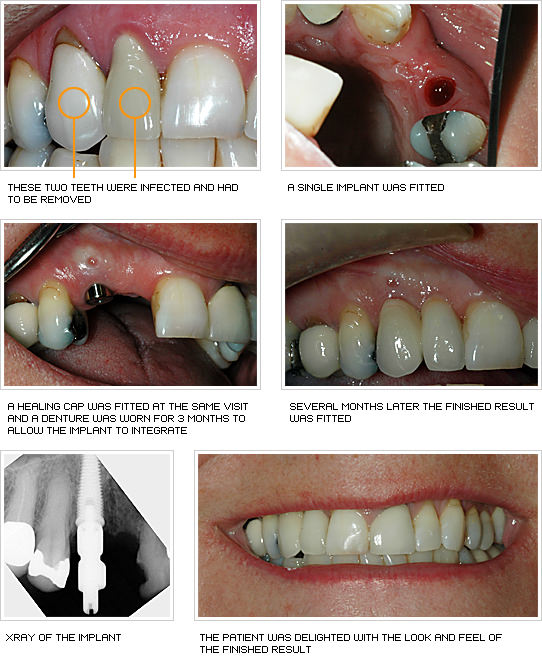The Of Dental Sense
Table of ContentsGetting My Dental Sense To WorkThe Buzz on Dental SenseDental Sense Can Be Fun For EveryoneDental Sense Can Be Fun For Anyone
are medical devices operatively dental implanted right into the jaw to bring back an individual's capability to chew or their look. They offer support for synthetic (fake) teeth, such as crowns, bridges, or dentures. When a tooth is shed because of injury or illness, a person can experience issues such as fast bone loss, faulty speech, or adjustments to chewing patterns that cause pain.Oral implant systems include an oral implant body and dental implant joint and may also consist of an abutment addiction screw. Front tooth filling. The oral implant body is surgically put in the jawbone in area of the tooth's origin. The dental implant abutment is normally affixed to the implant body by the joint fixation screw and prolongs via periodontals into the mouth to sustain the attached synthetic teeth
(https://filesharingtalk.com/members/608667-dentalsense1)Framework of The Oral Implant System selecting oral implants, speak with your oral supplier regarding the prospective advantages and risks, and whether you are a candidate for the treatment. Points to take into consideration: Your general health is an important variable in figuring out whether you are a great candidate for oral implants, for how long it will require to recover, and how long the dental implant might remain in location.
Cigarette smoking may affect the recovery procedure and reduce the long-term success of the dental implant. The healing procedure for the implant body may take a number of months or longer, during which time you typically have a temporary joint in location of the tooth. the oral implant procedure: Thoroughly adhere to the oral hygiene guidelines provided to you by your oral provider.
How Dental Sense can Save You Time, Stress, and Money.
Implant failing can result in the requirement for an additional operation to repair or change the dental implant system. Recovers the capacity to chew Recovers aesthetic appearance Helps keep the jawbone from reducing as a result of bone loss Preserves the wellness of the surrounding bone and gums Assists maintain nearby (neighboring) teeth stable Improves lifestyle Damages to bordering all-natural teeth during dental implant positioning Injury to the surrounding cells throughout surgical treatment, such as sinus opening Injury throughout surgery (for instance, fracture of bordering jawbone) Inadequate feature, such as feeling like the teeth do not attack with each other normally A feeling that the tooth is loose or twisting in place arising from an abutment screw loosening Implant body failing (looseness of the dental implant body) as a result of systemic infection, which might be most likely in individuals with unchecked diabetics issues as a result of local infection in bone and gum tissues supporting the implant body due to delayed healing, which may be more probable in patients that smoke Problem cleaning up the gum tissues around the implant, leading to bad dental health Without treatment periodontal condition Post-surgical feeling numb because of nerve impingement or damage Constantly alert healthcare suppliers and imaging service technicians that you have dental implants before any kind of magnetic vibration imaging (MRI) or x-ray procedures.
FDA is not knowledgeable about any kind of adverse occasions reported for MRI or x-ray procedures with dental implants. Dental implants systems are typically constructed from materials that follow global agreement requirements of the International Organization for Standardization (ISO) or ASTM International. These criteria have details of what makes a safe material.

An oral implant is a structure that changes a missing out on tooth. With screw-like tools, the specialist inserts a dental implant into the jawbone, and it acts as a support for a synthetic tooth, called a crown. A tool called a joint links the fabricated tooth to the dental implant. The crown is customized to fit the individual's mouth and match the shade of their teeth.
A Biased View of Dental Sense
Some people are not eligible for dental implant surgery. It is for dental surgeons to operate on individuals with: severe illnessuncontrollable metabolic diseasebone or soft tissue condition or infectionIf these concerns are settled, an individual can have the surgical treatment. In, oral surgeons abstain from operating on individuals with: If people with any one of the above undertake oral implant surgical procedure, there is a higher danger of the dental implant stopping working.

Dental implant surgical treatment is a personalized process. It's not the same for everybody. However the adhering to offers a basic overview of what you can anticipate your dental professional, dental specialist, periodontist or prosthodontist to do: Place the implant surgically. Offer you time Resources to recover. Connect the post and last crown, bridge or denture.
Next, your specialist will thoroughly place the oral implant right into your jaw. Your doctor will reposition your gum tissues and shut the laceration with stitches. If your dental implant is near the front of your mouth, your dental professional will make a temporary tooth for you to put on up until you heal. That way, you won't have a void in your smile while you recover.
The Dental Sense Statements
Throughout the recovery stage, your jawbone ought to fuse to the oral implant. This procedure can take anywhere from 3 to nine months.
As soon as your implant heals, your dentist can connect the joint (little connector message) and your last restoration (crown, bridge or denture). This generally takes about one hour to complete and may need a 2nd small surgery. You shouldn't really feel any pain during your dental implant procedure due to the fact that your copyright will certainly use medication to numb your gums.